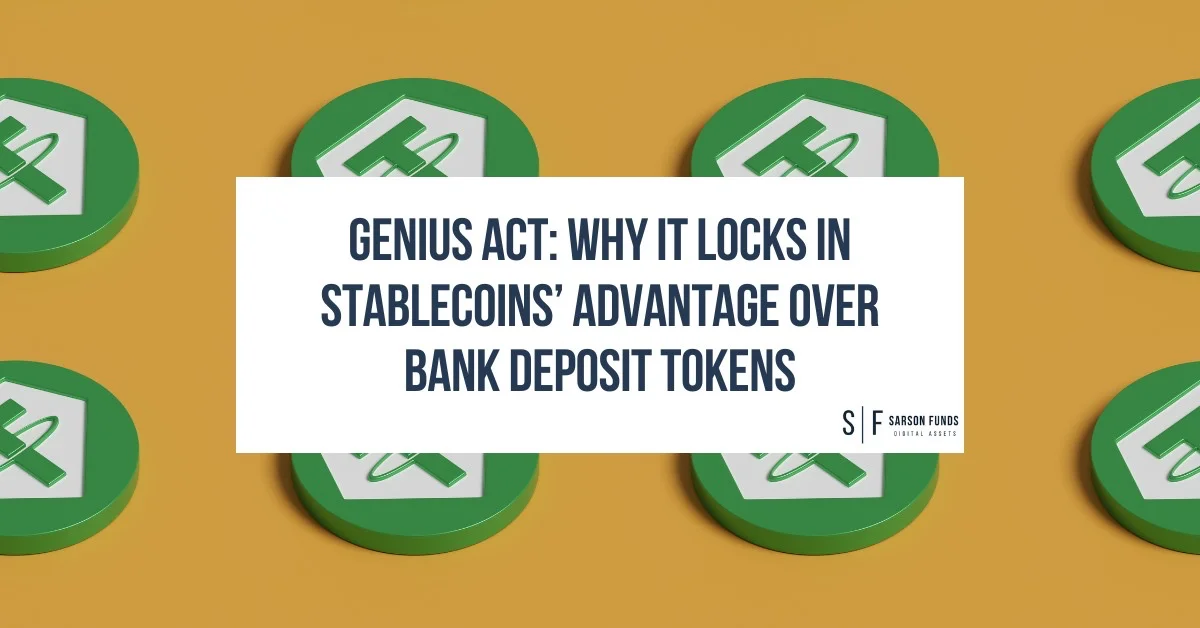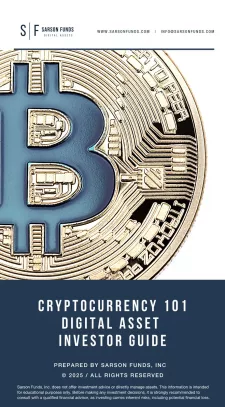
Of the three major digital asset bills passed during “Crypto Week,” only one has been signed into law: the GENIUS Act. Enacted by President Trump on July 18, the law gives stablecoins a formal regulatory framework, making them legal, compliant, and scalable without requiring a banking charter.
That single provision shifts the playing field. The GENIUS Act doesn’t just regulate stablecoins; it redefines who has the authority to issue digital dollars in the first place.
Stablecoins vs. Deposit Tokens: Core Differences
For years, banks have proposed issuing deposit tokens: digital versions of traditional checking account balances. These are confined to a single bank’s balance sheet and backed by commercial assets, making them subject to the same risks as any other bank liability—including exposure to loans, leverage, and market cycles.
Stablecoins take a fundamentally different approach. Tokens like USDC and USDT are backed one-to-one by U.S. Treasuries, cash, or money market funds. They function more like tokenized government debt than private credit, making them far less risky from a user perspective.
With the GENIUS Act now law, Congress has effectively chosen this second model. It allows regulated non-bank issuers to offer stablecoins to the public using fully reserved, transparent structures designed for open, global use.
A Win for Open Access and Global Reach
The GENIUS Act gives stablecoins a regulatory green light without requiring a banking license. It lays out clear compliance standards for issuers, including:
-
- Full one-to-one reserve backing in cash or U.S. Treasuries
- Monthly audits and transparent public disclosures
- A licensing path for fintechs and non-bank entities to issue stablecoins legally
These standards are outlined in a White House fact sheet, which summarizes the core provisions and compliance requirements included in the law.
Together, these requirements give stablecoins legal certainty while preserving their global reach, composability, and independence from traditional banking rails.
As a result, stablecoins are better suited for open markets, cross-border payments, and integration with decentralized finance. Deposit tokens, by contrast, are confined to closed networks. They remain a tool for interbank transfers, corporate treasury management, and settlement between financial institutions. They are not intended for everyday use by consumers or developers building in Web3.
Why Stablecoins Are Scaling and Deposit Tokens Are Stalling
Stablecoins have already found product-market fit. In emerging markets, they provide access to U.S. dollars without requiring a bank account. In crypto-native ecosystems, they serve as the base layer for trading, lending, and payments. They are widely used for remittances, merchant settlements, and saving in inflation-prone regions.
Deposit tokens, on the other hand, are not built for this kind of adoption. They are typically limited to private bank networks, tied to a specific institution, and subject to the same risk factors as traditional deposits. They do not circulate freely, and they are not accessible to the average consumer or developer.
As stablecoins continue to scale across both retail and institutional markets, deposit tokens remain confined to a narrow set of internal banking functions. The GENIUS Act reinforces this divide by backing the model that already works in the real world.
The Strategic Implication: Dollar Dominance Without Bank Control
Stablecoins are already a meaningful force in global finance. In 2024, Tether became one of the top five holders of U.S. Treasuries, surpassing many foreign central banks. That trend is accelerating, and the GENIUS Act gives it a clear, compliant path forward.
By allowing non-bank entities to issue stablecoins backed by U.S. debt, the United States is extending the reach of the dollar without relying on the traditional banking system. This opens access to dollar-denominated assets in regions where banks are limited but internet access is growing.
It also creates space for open financial infrastructure. Developers, fintechs, and marketplaces can build on stablecoins without needing to work through legacy banks. The result is a faster, more transparent, and more accessible system for global payments, savings, and digital commerce.
The Bottom Line
The GENIUS Act defines the path forward for digital dollars. It validates a model that is fully backed, publicly auditable, and open to innovation outside the walls of the banking system.
Stablecoins now have a legal foundation to grow at scale. Deposit tokens, while useful in limited settings, will remain secondary. The future of digital currency is no longer a theoretical debate. It is here, and it is already in circulation.
Disclosures: This article is for informational purposes only and should not be considered financial, legal, tax, or investment advice. It provides general information on cryptocurrency without accounting for individual circumstances. Sarson Funds, Inc. does not offer legal, tax, or accounting advice. Readers should consult qualified professionals before making any financial decisions. Cryptocurrency investments are volatile and carry significant risk, including potential loss of principal. Past performance is not indicative of future results. The views expressed are those of the author and do not necessarily reflect those of Sarson Funds, Inc. By using this information, you agree that Sarson Funds, Inc. is not liable for any losses or damages resulting from its use.









